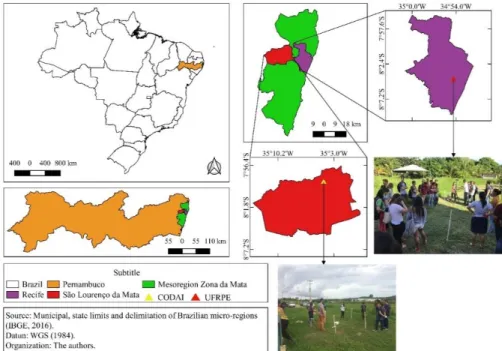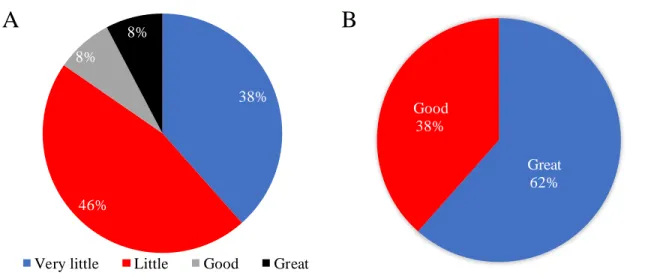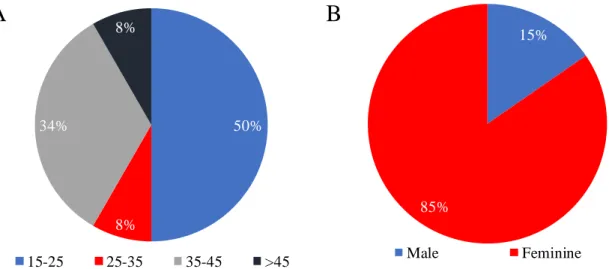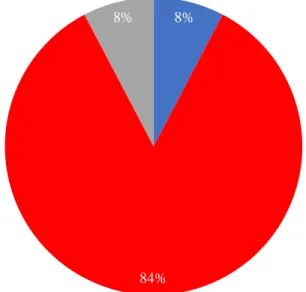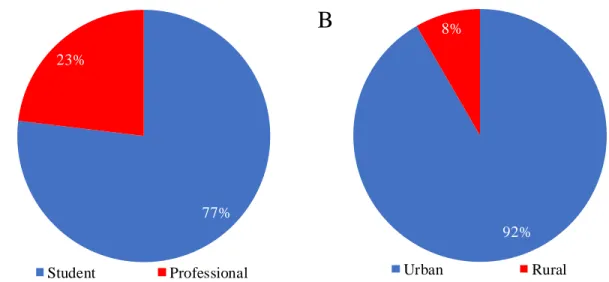Difusão do emprego da energia solar para alimentação de cercas elétricas na zona
da mata de Pernambuco, Brasil
Diffusion of solar power employment for electrical fence feeding in the
Pernambuco forest zone, Brazil
DOI:10.34117/bjdv6n5-485
Recebimento dos originais: 13/04/2020 Aceitação para publicação: 25/05/2020
Maria Eduarda Gonçalves de Oliveira
Formação acadêmica: Graduanda em Engenharia Agrícola Instituição: Universidade Federal Rural de Pernambuco
Endereço: Rua Manuel de Medeiros, s/n, Dois Irmãos, 52171-900, Recife – PE, Brasil E-mail: dduda.oliveira@hotmail.com
Gledson Luiz Pontes de Almeida
Formação acadêmica: Doutor em Engenharia Agrícola Instituição: Universidade Federal Rural de Pernambuco
Endereço: Rua Manuel de Medeiros, s/n, Dois Irmãos, 52171-900, Recife – PE, Brasil E-mail: gledson81@hotmail.com
Marcos Vinícius da Silva
Formação acadêmica: Doutorando em Engenharia Agrícola Instituição: Universidade Federal Rural de Pernambuco
Endereço: Rua Manuel de Medeiros, s/n, Dois Irmãos, 52171-900, Recife – PE, Brasil E-mail: marcolino_114@hotmail.com
Héliton Pandorfi
Formação acadêmica: Doutor em Física do Ambiente Agrícola pela Escola Superior de Agricultura Luiz de Queiroz, ESALQ/USP
Instituição: Universidade Federal Rural de Pernambuco
Endereço: Rua Manuel de Medeiros, s/n, Dois Irmãos, 52171-900, Recife – PE, Brasil E-mail: hpandorf@hotmail.com
Pedro Henrique Dias Batista
Formação acadêmica: Doutorando em Engenharia Agrícola Instituição: Universidade Federal Rural de Pernambuco
Endereço: Rua Manuel de Medeiros, s/n, Dois Irmãos, 52171-900, Recife – PE, Brasil E-mail: giga_pedro@hotmail.com
Rodes Angelo Batista da Silva
Formação acadêmica: Doutoranda em Engenharia Agrícola Instituição: Universidade Federal Rural de Pernambuco
Endereço: Rua Manuel de Medeiros, s/n, Dois Irmãos, 52171-900, Recife – PE, Brasil E-mail: rodesangel@gmail.com
Jhon Lennon Bezerra da Silva
Formação acadêmica: Doutorando em Engenharia Agrícola pela Instituição: Universidade Federal Rural de Pernambuco
Endereço: Rua Manuel de Medeiros, s/n, Dois Irmãos, 52171-900, Recife – PE, Brasil E-mail: jhonlennoigt@hotmail.com
Taize Calvacante Santana
Formação acadêmica: Mestranda em Engenharia Agrícola Instituição: Universidade Federal Rural de Pernambuco
Endereço: Rua Manuel de Medeiros, s/n, Dois Irmãos, 52171-900, Recife – PE, Brasil E-mail: taizehaes@gmail.com
Nicoly Farias Gomes
Formação acadêmica: Doutoranda em Engenharia Agrícola Instituição: Universidade Federal Rural de Pernambuco
Endereço: Rua Manuel de Medeiros, s/n, Dois Irmãos, 52171-900, Recife – PE, Brasil E-mail: nicoly_farias@hotmail.com
Ingrid do Nascimento Bezerra
Formação acadêmica: Graduanda em Engenharia Agrícola pela Instituição: Universidade Federal Rural de Pernambuco
Endereço: Rua Manuel de Medeiros, s/n, Dois Irmãos, 52171-900, Recife – PE, Brasil E-mail: ingridnascimentob@hotmail.com
Weslley Amaro da Silva
Formação acadêmica: Mestrando em Engenharia Agrícola Instituição: Universidade Federal Rural de Pernambuco
Endereço: Rua Manuel de Medeiros, s/n, Dois Irmãos, 52171-900, Recife – PE, Brasil E-mail: weslleyamaro.s@gmail.com
Maria Vitória Neves de Melo
Formação acadêmica: Graduanda em Engenharia Agrícola Instituição: Universidade Federal Rural de Pernambuco
Endereço: Rua Manuel de Medeiros, s/n, Dois Irmãos, 52171-900, Recife – PE, Brasil E-mail: vitorianesss@outlook.com
Cristiane Guiselini
Formação acadêmica: Doutora em Agronomia pela Escola Superior de Agricultura Luiz de Queiroz, ESALQ/USP
Instituição: Universidade Federal Rural de Pernambuco
Endereço: Rua Manuel de Medeiros, s/n, Dois Irmãos, 52171-900, Recife – PE, Brasil E-mail: cguiseli@icloud.com
Adriel Sales Coutinho
Formação acadêmica: Mestrando em Engenharia Agrícola Instituição: Universidade Federal Rural de Pernambuco
Endereço: Rua Manuel de Medeiros, s/n, Dois Irmãos, 52171-900, Recife – PE, Brasil E-mail: adriel_sales2009@hotmail.com
RESUMO
A difusão de tecnologias voltadas a diversificação da matriz energética nacional, torna-se necessário para suprir a sazonalidade e a disponibilidade de energia elétrica. Objetivou-se com este estudo, identificar por meio de práticas extensionistas o uso de energia solar por pequenos produtores rurais e o nível de conhecimento sobre o uso desta fonte alternativa de geração de energia elétrica. O estudo foi conduzido na Universidade Federal Rural de Pernambuco (UFRPE) Recife-PE e no Colégio Agrícola Dom Agostinho Ikas da UFRPE (CODAI), localizado no munícipio de São Lourenço da Mata-PE. A atividade de extensão constou de palestras sobre a aplicação da energia solar na alimentação de cercas, tendo em vista o manejo de pastagens e, atividade prática desenvolvida posteriormente às palestras. Foi aplicado um questionário em que os participantes responderam sobre o conteúdo abordado na palestra, sendo que 84% dos alunos não apresentavam conhecimento suficiente sobre energia solar, enquadrados nas categorias “pouco” e “muito pouco”, o que evidenciou um déficit de informação sobre o tema discutido e 100% dos entrevistados sinalizaram que o conteúdo apresentou relevância de “bom” a “excelente”. O nível de escolaridade dos participantes sinalizou que 84% possuíam ensino médio completo, 8% apresentavam ensino superior incompleto, dos quais 23% atuavam profissionalmente no setor primário. A aplicação da energia solar na área agrícola, ainda é uma prática pouco difundida entre os participantes da atividade de extensão realizada, o que ficou evidenciado pelo déficit de conhecimento na utilização de painéis solares para energização de cerca elétrica no manejo de animais a pasto.
Palavras-chaves: área rural; energia solar; extensão ABSTRACT
The diffusion of technologies aimed at diversifying the national energy matrix becomes necessary to supply the seasonality and availability of electricity. The objective of this study was to identify, through extension practices, the use of solar energy by small farmers and the level of knowledge about the use of this alternative source of electricity generation. The study was conducted at the Federal Rural University of Pernambuco (UFRPE) Recife-PE and the Dom Agostinho Ikas Agricultural College of UFRPE (CODAI), located in São Lourenço da Mata-PE. The extension activity consisted of lectures on the application of solar energy to feed fences, because of pasture management and practical activity developed after the lectures. A questionnaire was applied in which participants answered about the content addressed in the lecture, and 84% of the students did not have enough knowledge about solar energy, falling into the categories “little” and “very little”, which evidenced a lack of information about
the topic discussed and 100% of respondents indicated that the content was relevant from “good” to “excellent”. The educational level of the participants indicated that 84% had completed high school, 8% had incomplete higher education, of which 23% worked professionally in the primary sector. The application of solar energy in the agricultural area is still a widespread practice among the participants of the extension activity performed, which was evidenced by the lack of knowledge in the use of solar panels to energize electric fence in the management of grazing animals.
Keywords: rural area; solar energy; extension 1 INTRODUCTION
In the last decade, there were cases of water abnormalities in the Brazilian scenario, with water being the main source of the country's energy matrix, these events had a reverberated on the reduction of hydroelectric energy supply (Barbosa Filho, 2017). Also, a fraction of the Brazilian and world population face problems related to the poor quality of electricity, with the occurrence of indemnities related to the damage to appliances caused by the distribution network (SALOMÃO, KAGAN & BORGES, 2012; BACK et al., 2016; SILVA, MOREIRA & FREITAS, 2018).
Because of this, there is a growing interest in the quality of electricity, mainly in the technological evolution of electronic equipment, widely used in various sectors, be it industrial, commercial or residential (MONTOYA et al., 2018; YILDIRIM et al., 2018).
In the conventional Brazilian energy sphere, oscillations in the supply of energy in certain areas, mainly in rural areas, or even at certain times of the year, are common In addition to the energy instability faced in Brazil, the high costs of maintaining damaged appliances, in addition to the fixed expense of the energy bill (SALOMÃO, KAGAN & BORGES, 2012).
Given the energy tensions seen in recent years in Brazil, the dependence on a single generating source causes numerous troubles to the population, especially when the potential energy of the reservoirs becomes insufficient for the current energy demand. Based on this scenario, it is essential to consider alternative energy sources available in Brazil, preferably renewable, such as solar energy.
The exploitation of solar energy for energy purposes has a high initial investment, however, this amount is amortized by making the surplus available on the network, promoting a reduction or absence of payment of electricity by the user. (MENEZES et al., 2018; GOBBO, SILVA & BONE, 2018).
Brazil offers high potential in the generation of solar energy, due to the great availability of solar radiation throughout the year. Besides, the generation of energy from renewable sources promotes savings for consumers, considering that the cost of conventional energy tends to increase. On the other
hand, it guarantees access to energy in remote regions, which are difficult to access to the electricity grid. However, government collaboration is necessary for the maximum development and popularization of the use of solar energy in the country (RÜTHER & ZILLES, 2011; FERREIRA et al., 2018).
There are applications of the use of solar energy in several areas in the rural area, due to the problems faced with conventional electric energy. Such as, use of solar energy to feed the central pivot irrigation system (SOUSA et al., 2019), the application of solar energy in the electrification of rural fences for pastures (SILVA, M., et al, 2019) and employment in the control of environmental variables inside agricultural greenhouses (HASSANIEN, LI & LIN, 2016).
Given this approach, the objective of this study was to identify, through extension practices, the use of solar energy by small rural producers and the level of knowledge about the use of this alternative source of electricity generation.
2 MATERIAL AND METHODS
The extension activity was conducted in two locations, the first in the Department of Agricultural Engineering of University Federal Rural of Pernambuco (UFRPE), located in Recife-PE, latitude 8º04'03'' S, longitude 34º55'00'' W and altitude 4 m. The second was at the agricultural school Dom Agostinho Ikas da UFRPE (CODAI), located in the city of São Lourenço da Mata-PE, latitude 7°58'30.4" S, longitude 35°04'43.2" W and altitude 40 m (Figure 1).
The study contemplated a technology diffusion course on the application of solar energy in the feeding of fences and the management of pastures, directed to the rural public and students of technical schools. In the lectures, we sought to disseminate knowledge and expand the horizon on the use of this renewable energy source and its applicability in agriculture and the advantages of using this technique.
To measure the efficiency of a rural fence electrified using solar energy and to disseminate knowledge practically, an activity was carried out after the course, with the assembly of a fence.
For the assembly of the fence, 16 plastic rods were used, with a spacing of 5 m, forming a picket with dimensions of 20x20 m, with two loops of electroplastic cable around the fence. To feed the electric fence, a solar plate with a pulsating rural solar electrifier was used, associated with a stationary battery to feed the fence at night and on cloudy days.
Air temperature and relative humidity were recorded using a digital hygrometer (0 to 60°C operating environment for indoor environments and from -50 to 70°C for outdoor environments, with accuracy from 0 to 40°C and humidity recording range from 20 to 90 the voltage transmitted by the wire was recorded using a digital voltmeter (with voltage measurements from 0,1 to 15 kV, in interval between pulses, in seconds) and the illuminance by a luximeter (-10 to 40°C operating environment with relative humidity <70%, registration range from 0,01 to 100000 lux) (Figure 2).
Figure 2. Digital hygrometer term (A); Voltmeter (B); Luximeter (C).
After the practical class, a structured questionnaire was applied, in which the participants answered about the content covered in the presentation, evaluating items related to the presentation methodology and the identification of participants. The questionnaire was applied to 51 participants, as shown in table 1:
Table 1. Questions applied to participants.
1. What is your knowledge about the topic to be presented?
Very little ( ) Little ( ) Good ( ) Very good ( ) Excellent ( )
2. Content that was covered?
Terrible ( ) Weak ( ) Regular ( ) Good ( ) Excellent ( )
3. What aplication of this lecture in your area? Answer:
4. How old are you? Answer:
5. Gender?
Male ( ) Female ( )
6. Education level?
Incomplete Elementary School ( ) Complete Elementary School ( ) Incomplete High School ( ) Complete High School ( )
Incomplete College ( ) Complete College ( )
7. Professional performance? Answer:
8. Habitation?
Rural ( ) Urban ( ) Both ( )
The indicators obtained from the questionnaire were analyzed and separated by categories, through graphic representations for a better interpretation of the results achieved with the activity.
3 RESULTS AND DISCUSSION
Through the questionnaires answered by the participants, it was observed that 84% of the students did not have sufficient knowledge about solar energy, falling into the categories “Little” and “Very little”, which shows a deficit of information on the topic discussed (Figure 3A). According to Garlet et al. (2019) one of the major barriers to the development of solar energy is the lack of knowledge on the subject. Kassem et al. (2019) still emphasize that the dissemination of knowledge through extension practices, focused on agriculture, provide the improvement of daily work activities.
According to Figure 3B, 100% of respondents indicated that the content was relevant from "good" to "excellent", which indicates that the theme addressed aroused the interest of the participants and highlighted the need for the dissemination of technology applied to agriculture and livestock.
Figure 3. Knowledge on the topic presented (A); Applied content (B).
Santos Carstens and Cunha (2019) point out that one of the main actors for the advancement of solar energy in Brazil, is education and professional training in the area, showing that Universities and educational Institutes are the main disseminating agents for the applied development of technology.
It was observed that there was greater interest in the applicability of the use of solar energy in the agricultural area, by the students, with an emphasis on feeding fences for pastures. (Figure 4). According to Silva, et al. (2019) the use of solar panels to feed of electric fences in the coastal region of the state of Pernambuco, showed high efficiency in meeting the technical needs required for the proper handling of animals grazing.
In addition to the approach taken in the study, the use of solar energy can be seen in other areas of agriculture, such as Sousa et al. (2019), who evaluated the economic feasibility of using solar energy in a central pivot in the state of Goiás, in successive cultivation of soybeans, corn and tomatoes for industry and, observed satisfactory results of the use of this energy in the irrigation system feeding through central pivot.
38%
46% 8%
8%
Very little Little Good Great
Great 62% Good
38%
Figure 4. Objective of the participants with the lecture provided.
Following the Figure 5A, most of the participants are young, however, there is a portion of the older population that shows interest in improving knowledge on the topic addressed, linked to this, can be seen in Figure 5B, that 15% of respondents are male, demonstrating that the majority of stakeholders are women (85%).
In a study by Maia et al. (2019), in which they evaluated life projects of young students of a technical course in Agroecology integrated to high school, at a school located in the municipality of Água Boa (MT), the authors observed a higher percentage of male students, showing that women represented the minority of the interviewed students, a scenario different from that observed in the present study.
Figure 5. Age range of participants (years) (A); percentage of men and women among students (B). 0 1 2 3 4 5 6 7 8
Agricultural application Non-agricultural application
15% 85% Male Feminine 50% 8% 34% 8% 15-25 25-35 35-45 >45
A
B
According to Figure 6, a large portion of respondents have completed high school (84%), with 8% having incomplete higher education, percentages that include most of those who already work professionally in the sector (Figure 7A).
Figure 6. Participants' level of education.
In the figure 7B, it is possible to observe that most of the interviewed students live in the urban area, therefore, without practical experience in the agricultural segment, what can characterize the ignorance of the application of technical resources, such as the use of solar panels to energize electric fences, with emphasis on improving the management of livestock of production on pasture. This reinforces the importance of the activity developed, because, the professional future of the participants, will be associated with the responsibility of acting as an agent of technology diffusion in the field.
8%
84% 8%
Incomplete higher education Complete high school Incomplete high school
Figure 7. Percentage of professional performance of participants (A); participants' habitation (B).
Maia et al. (2019) point out that part of the youth who live in rural areas of Mato Grosso, seek courses aimed at the agricultural area to improve their knowledge and stay in rural areas, to succeed his parents in the activities of the agricultural family establishment. The same can be seen in the present study, in which 8% of those who live in the rural area, aim to disseminate the knowledge acquired in their daily life in the field, to succeed their parents' activity.
4 CONCLUSIONS
The application of solar energy in the agricultural area is still a little widespread practice among participants in the extension activity carried out, which was evidenced by the lack of knowledge in the use of solar panels to energize an electric fence in the handling of animals on pasture.
The proposed extension activity, with an emphasis on technology diffusion, can fill gaps in knowledge applied to the primary sector and minimize problems associated with energy demand, in addition to stimulating the use of new solutions available to agriculture.
REFERENCES
BACK, J. A.; TEDESCO, L. P.; MOLZ, R. F.; NARA, E. O. B. An embedded system approach for energy monitoring and analysis in industrial processes. Energy, v. 115, p. 811-819, 2016. https://doi.org/10.1016/j.energy.2016.09.045
BARBOSA FILHO, F. H. A crise econômica de 2014/2017. Estudos avançados, v. 31, n. 89, p. 51-60, 2017. http://dx.doi.org/10.1590/s0103-40142017.31890006 77% 23% Student Professional 92% 8% Urban Rural
A
B
FERREIRA, A.; KUNH, S. S.; FAGNANI, K. C.; SOUZA, T. A.; TONEZER, C.; SANTOS, G. R. et al. Economic overview of the use and production of photovoltaic solar energy in brazil. Renewable and
Sustainable Energy Reviews, v. 81, p. 181-191, 2018. https://doi.org/10.1016/j.rser.2017.06.102
GARLET, T. B.; RIBEIRO, J. L. D.; SAVIAN, F. S.; SILUK, J. C. M. Paths and barriers to the diffusion of distributed generation of photovoltaic energy in southern Brazil. Renewable and Sustainable Energy
Reviews, v. 111, p. 157-169, 2019. https://doi.org/10.1016/j.rser.2019.05.013
GOBBO, E. R.; SILVA, M. A. T. F.; BONE, R B. Do petróleo à energia fotovoltaica: a inserção do brasil neste novo mercado. In: VII Congresso Brasileiro de Energia Solar-CBENS. 2018.
HASSANIEN, R. H. E.; LI, M.; LIN, W. D. Advanced applications of solar energy in agricultural greenhouses. Renewable and Sustainable Energy Reviews, v. 54, p. 989-1001, 2016.
KASSEM, H. S.; BELLO, A. R. S.; ALOTAIBI, B. M., ALDOSRI; F. O.; STRAQUADINE, G. S. Climate Change Adaptation in the Delta Nile Region of Egypt: Implications for Agricultural Extension.
Sustainability, v. 11, n. 3, p. 685, 2019. https://doi.org/10.3390/su11030685
MAIA, A. H.; LUZ, M. C. S.; SILVA, F. C.; DE SOUZA, M. E.; ZARATIM, A. P. P.; SILVA, T. O. et al. Jovens rurais estudantes da Escola Estadual Jaraguá, Água Boa (MT): projetos de vida, dilemas e sucessão familiar. Agricultura Familiar: Pesquisa, Formação e Desenvolvimento, v. 12, n. 2, p. 97-117, 2019. http://dx.doi.org/10.18542/raf.v12i2.5549
MENEZES, H. R.; SILVA, T. S.; CERQUEIRA, S. S.; GOMES, S. M. A.; GUIMARÃES ANCHIETA, J. T.; CAMPOS, A. Energia solar: Avaliação do nível de informação sobre o uso da energia solar e sua utilização no brasil. Revista Cientefico, v. 18, n. 38, p. 47-60, 2018.
MONTOYA, F.; BAÑOS, R.; ALCAYDE, A.; MONTOYA, M.; MANZANO-AGUGLIARO, F. Power quality: Scientific collaboration networks and research trends. Energies, v. 11, n. 8, p. 2067, 2018. https://doi.org/10.3390/en11082067
RÜTHER, R. & ZILLES, R. Making the case for grid-connected photovoltaics in Brazil. Energy policy, v. 39, n. 3, p. 1027-1030, 2011. https://doi.org/10.1016/j.enpol.2010.12.021
SALOMÃO, A. C. O.; KAGAN, N.; BORGES, A. E. A responsabilidade civil das concessionárias de energia elétrica por danos elétricos ocasionados ao consumidor. Revista do Direito da Energia, v. 11, p. 112-117, 2012.
SANTOS CARSTENS, D. D.; CUNHA, S. K. Challenges and opportunities for the growth of solar photovoltaic energy in Brazil. Energy policy, v. 125, p. 396-404, 2019. https://doi.org/10.1016/j.enpol.2018.10.063
SILVA, J. C.; MOREIRA, L. F. R.; FREITAS, S. C. L. Analysis of the Energy Quality of the Electronic Laboratory of the Federal University of Tocantins Using Artificial Immunological Systems. In: Brazilian
Technology Symposium. Springer, Smart Innovation, Systems and Technologies, 2018. p. 613-621.
SILVA, M. V.; MELO, M. V. N.; OLIVEIRA, M. E. G.; BEZERRA, I. N.; SILVA, D. A.; ALMEIDA, G. L. Análise multivariada da eficiência de cercas elétricas alimentadas por energia fotovoltaica no estado de Pernambuco. Revista Ambientale, v. 11, n. 1, p. 1-9, 2019.
SOUSA, M. A.; ALVES JÚNIOR, J.; EVANGELISTA, A. W. P.; CASAROLI, D.; MESQUITA, M. Nota técnica: estimativa de viabilidade econômica do uso de energia fotovoltaica em pivô central no estado de goiás. Revista Engenharia na Agricultura, v. 27, n. 1, p. 22-29, 2019. 10.13083/reveng.v27i1.848
YILDIRIM, O.; ERISTI, B.; ERISTI, H.; UNAL, S.; EROL, Y.; DEMIR, Y. FPGA-based online power quality monitoring system for electrical distribution network. Measurement, v. 121, p. 109-121, 2018. https://doi.org/10.1016/j.measurement.2018.02.058
